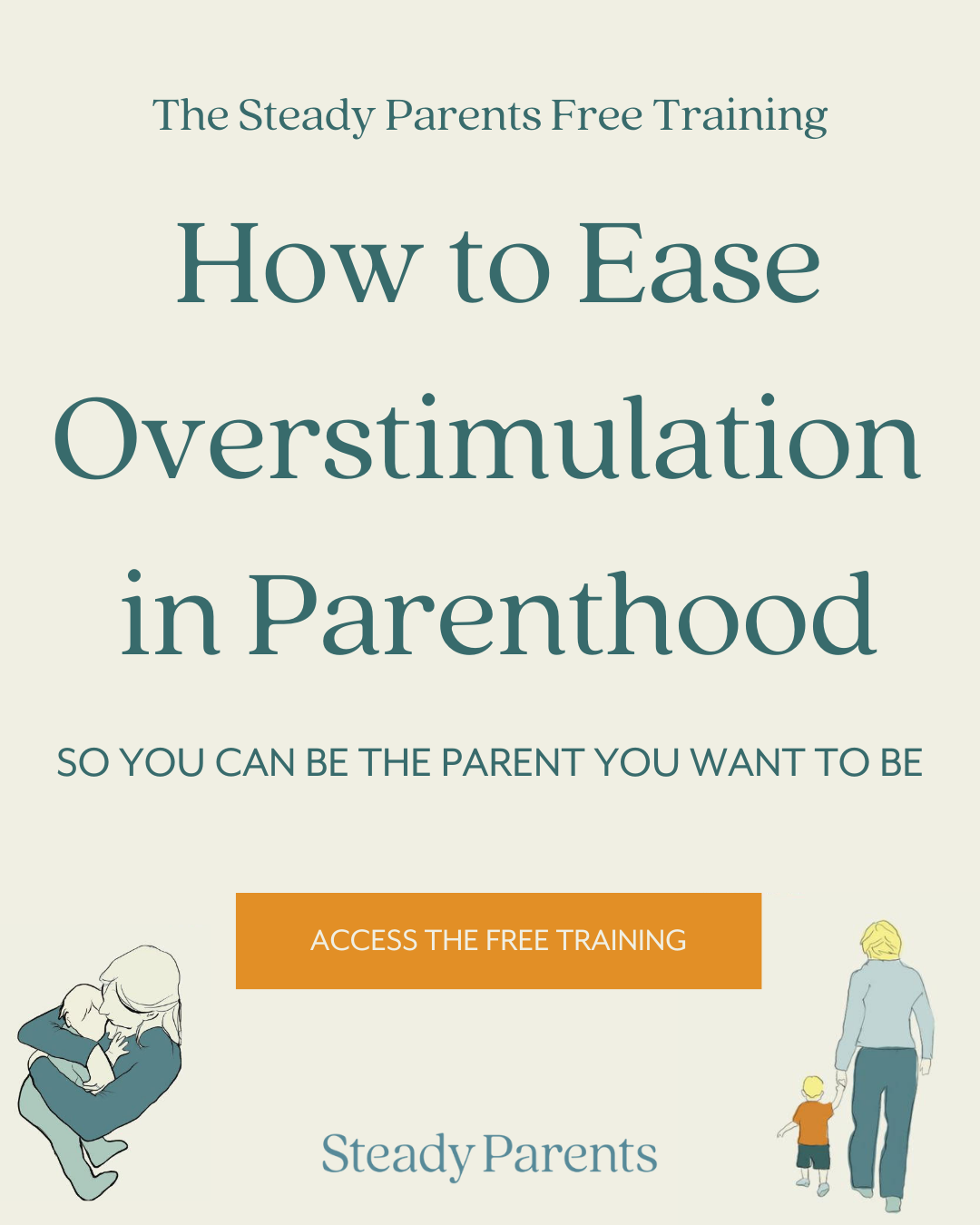The Polyvagal Theory: Understanding How Our Body Responds to Stress, Safety, and Social Interactions
Our nervous system is intricately wired to detect safety and threat through various cues, including facial expressions and tone of voice. These cues play a crucial role in our ability to navigate social interactions, interpret emotional states, and respond effectively to our environment.
Here’s an Example of How Your Child May Sense They are Safe or In Danger Based on Your Behavior as Their Parent
Imagine a scenario where a child is playing in the park with their parents. Here's how the child may notice safety and threat in their parents' facial expressions and tone:
Safety Cue
As the child happily plays on the swings, they glance over at their parents who are smiling, making eye contact, and using a gentle tone of voice to encourage them. The parents' relaxed facial expressions and warm tone convey a sense of safety and support, reassuring the child that they are in a secure and nurturing environment.
You may even notice your little one is more brave or walks a little farther away from you than other kids the same age who have “helicopter parents.” When our children sense that we are calm in a given situation, they are more likely to feel the same.
Threat Cue
Later, while playing on the jungle gym, the child accidentally slips and falls, scraping their knee. They look up at their parents for comfort and notice a sudden change in facial expression and tone. The parents' brows furrow, their eyes widen with concern, and their voice becomes tense and urgent as they rush to check on the child.
Despite the parents' quick response to the injury, the child picks up on these threat cues, sensing the shift from safety to potential danger in their parents' reactions.
In this example, the child's ability to detect safety and threat cues in their parents' facial expressions and tone plays a vital role in their emotional regulation and sense of security during playtime. The parents' nonverbal communication signals directly influence the child's perception of safety, trust, and support in their interactions with the environment.
Here's how our nervous system detects safety and threat through facial expression and tone:
Facial Expressions
Safety Cues
Facial expressions conveying warmth, openness, and relaxation signal safety to our nervous system. Smiles, soft eye contact, relaxed facial muscles, and open body language indicate a friendly, non-threatening environment.
Threat Cues
Conversely, facial expressions associated with fear, anger, tension, or distress trigger threat responses in our nervous system. Furrowed brows, narrowed eyes, clenched jaw, raised voice, or defensive postures signal potential danger or discomfort.
Tone of Voice
Safety Cues
A soothing, calm, and reassuring tone of voice communicates safety and comfort to our nervous system. Soft, gentle speech patterns, moderate volume, and a relaxed pace convey a sense of ease and non-aggression.
Threat Cues
On the other hand, a harsh, loud, or abrupt tone of voice can activate threat responses. Shouting, aggressive language, sarcasm, or abrupt changes in pitch and volume can trigger feelings of anxiety, defensiveness, or fear.
Nonverbal Cues
Safety Cues
Beyond facial expressions and tone of voice, nonverbal cues such as gestures, posture, and proximity contribute to our sense of safety. Non-threatening gestures, open body language, and appropriate personal space convey respect, trust, and safety.
Threat Cues
Aggressive gestures, invading personal space, or closed-off body language signal potential threat and trigger defensive responses in our nervous system.
Context and Consistency
Safety Cues
The context of the interaction also influences our perception of safety. Familiar environments, positive past experiences, and consistent, trustworthy behavior from others contribute to a sense of safety and security.
Threat Cues
In contrast, unfamiliar settings, unpredictable behavior, or previous negative experiences can heighten our perception of threat and activate stress responses in the nervous system.
Emotional Regulation and Safety
Safety Cues
When we perceive safety cues, our nervous system shifts into a state of relaxation, promoting emotional regulation, social engagement, and trust-building behaviors. This allows us to connect authentically, express emotions freely, and navigate relationships with ease.
Threat Cues
Conversely, threat cues trigger our body's stress response, leading to heightened arousal, defensive reactions, and a focus on self-protection. In this state, emotional regulation may be compromised, leading to increased reactivity, anxiety, or withdrawal.
Understanding how our nervous system detects safety and threat through facial expression and tone of voice is crucial for fostering positive social interactions, building healthy relationships, and creating supportive environments that promote emotional well-being. By cultivating awareness of these cues and their impact on our nervous system, we can enhance our ability to communicate effectively, respond empathetically, and create a sense of safety and trust in our interactions with others.
What is the Polyvagal Theory?
The polyvagal theory, proposed by Dr. Stephen Porges, is a way to understand how our body and brain respond to stress, safety, and social interactions (Lewis Psychology, 2023). Here's a simple breakdown:
Three States of Autonomic Nervous System (ANS)
Social Engagement
When we feel safe and connected, our ANS promotes social engagement. We're calm, able to communicate well, and build relationships.
Fight or Flight
If we sense danger or threat, our ANS activates the fight or flight response. Heart rate increases, adrenaline surges, and we prepare to defend ourselves or escape.
Freeze or Shutdown
If the threat feels overwhelming, our ANS may trigger a freeze or shutdown response. This is like playing dead to avoid danger. We may feel numb, disconnected, or overwhelmed.
Vagus Nerve's Role
The vagus nerve is a key player in the polyvagal theory. It regulates our heart rate, breathing, and digestion.
A healthy vagus nerve helps us shift between social engagement, fight or flight, and freeze or shutdown responses based on our environment and feelings of safety.
Adaptability and Response to Stress
The polyvagal theory emphasizes that our response to stress isn't just "on" or "off." It's a spectrum based on how safe or threatened we feel.
When we feel safe, our body supports social connection and positive interactions. When we feel threatened, our body gears up for protection or shutdown.
In simple terms, the polyvagal theory helps us understand how our body and mind work together to respond to stress and safety. It's like a built-in system that helps us navigate social situations, protect ourselves when needed, and recover when the threat is gone.
In Summary
In conclusion, understanding how our nervous system detects safety and threat through facial expressions and tone of voice is essential for parents in helping their children regulate their nervous systems.
The example of a child sensing safety or danger based on their parents' behavior highlights the profound impact of nonverbal cues on a child's emotional regulation and sense of security. By being mindful of our facial expressions, tone of voice, and nonverbal cues, parents can create a supportive and nurturing environment that promotes emotional well-being and positive social interactions for their children. Incorporating the principles of the polyvagal theory, such as promoting social engagement, recognizing stress responses, and fostering adaptability, empowers parents to effectively navigate stress, enhance safety cues, and promote emotional regulation in their family dynamics.
Ultimately, by building awareness and practicing empathetic communication, parents play a vital role in helping their children develop healthy nervous system regulation and resilience in various social and emotional contexts.
Pin This for Later:








